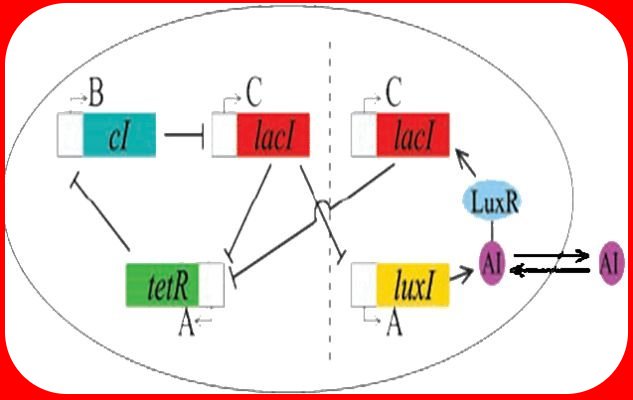Team:Montreal
From 2008.igem.org
(Prototype team page) |
Horiavulpe (Talk | contribs) |
||
| (61 intermediate revisions not shown) | |||
| Line 1: | Line 1: | ||
| - | <!-- | + | <center>[[Team:Montreal/Sponsors|Your logo here!]]</center> |
| + | {| align="center" | ||
| + | |align="center" |[[Image:mcgill front2.jpg|850 px]] | ||
| + | |}<br> | ||
| + | {|style="font color="#ffffff"; background-color:#cd0000; cellpadding="3" cellspacing="5" border="2" bordercolor="#cd0000"border-spacing:6px; text-align:center" width="960px" | ||
| + | !style="text-align:center; background-color:#cd0000; border-width:0px; padding:3px;"|[[Team:Montreal|<font color="#ffffff">Home</font>]] | ||
| + | !style="text-align:center; background-color:#cd0000; border-width:0px; padding:3px;"|[[Team:Montreal/Team|<font color="#ffffff">The Team</font>]] | ||
| + | !style="text-align:center; background-color:#cd0000; border-width:0px; padding:3px;"|[[Team:Montreal/Project|<font color="#ffffff">The Project</font>]] | ||
| + | !style="text-align:center; background-color:#cd0000; border-width:0px; padding:3px;"|[[Team:Montreal/Parts|<font color="#ffffff">Parts</font>]] | ||
| + | !style="text-align:center; background-color:#cd0000; border-width:0px; padding:3px;"|[[Team:Montreal/Notebook|<font color="#ffffff">Notebook</font>]] | ||
| + | !style="text-align:center; background-color:#cd0000; border-width:0px; padding:3px;"|[[Team:Montreal/Modeling|<font color="#ffffff">Modeling</font>]] | ||
| + | !style="text-align:center; background-color:#cd0000; border-width:0px; padding:3px;"|[[Team:Montreal/Links|<font color="#ffffff">Links</font>]] | ||
| + | !style="text-align:center; background-color:#0000FF; border-width:0px; padding:3px;"|[[Team:Montreal/Sponsors|<font color="#ffffff">Sponsors</font>]] | ||
| + | |} | ||
| - | |||
| - | |||
| - | |||
| - | |||
| - | |||
| - | |||
| - | |||
| - | |||
| - | |||
| - | |||
| - | |||
| - | |||
| - | |||
| - | + | == '''Project Overview: Synchronizing the Repressilator''' == | |
| + | ===Background=== | ||
| - | + | [[Image:Osc-rep.jpg||thumb|right|300px | A sinusoidal wave demonstrates a circadian rhythm]]Although typically used to describe physical phenomena, oscillations are also observed in a range of biological processes such as circadian rhythms, pacemaker cells, neuronal communication and nephron function. [http://www.aph.caltech.edu/people/elowitz_m.html Elowitz] and Leibler ([http://www.aph.caltech.edu/people/Repressilator.pdf 2000]) have designed a genetic system called the Repressilator, composed of three genes (λcI, TetR, LacI) tied in negative feedback loops, which generates oscillations in protein expression within ''Escherichia coli''. | |
| - | | | + | |
| - | + | ||
| - | + | ||
| - | + | ||
| - | + | ||
| - | + | ||
| - | + | ||
| - | + | ||
| - | + | ||
| - | + | ||
| - | + | ===In a Nutshell=== | |
| - | + | Unlike oscillating cells in the human body, the Repressilator does not allow for the synchronization of oscillations in a population of cells. We attempt to bring oscillating cells into phase with eachother by coupling via the "autoinducer" molecule AI. Our 2-gene construct may also be used in future genetic systems, making it a system of choice in a highly modular synthetic biology framework. | |
| - | + | ||
| - | + | ===Relevance and inspiration=== | |
| - | + | ||
| - | + | While it may be presumptuous to call the synchronization of Elowitz's Repressilator the proverbial '[http://en.wikipedia.org/wiki/Holy_Grail Holy Grail]' of modern bioengineering, parallels can be drawn between these two that tempt the leap to association. Synchronization is a crucial stepping stone towards the understanding of natural oscillatory systems and towards creating a synthetic system that can accurately emulate this natural phenomenon. Innumerable past, present and future bioengineering projects in iGEM and the scientific community focus and revolve around this concept and its applications. By exploring the fundamental theory through mathematical models and empirical observation, we hope to understand the nature of these systems and develop future synthetic applications. | |
| - | + | • | |
| - | + | [[Image:mcgillwinterpng.png|800px|center|McGill in winter]] | |
| - | + | ||
| - | + | ||
Latest revision as of 05:25, 6 August 2008

|
| Home | The Team | The Project | Parts | Notebook | Modeling | Links | Sponsors |
|---|
Contents |
Project Overview: Synchronizing the Repressilator
Background
Although typically used to describe physical phenomena, oscillations are also observed in a range of biological processes such as circadian rhythms, pacemaker cells, neuronal communication and nephron function. [http://www.aph.caltech.edu/people/elowitz_m.html Elowitz] and Leibler ([http://www.aph.caltech.edu/people/Repressilator.pdf 2000]) have designed a genetic system called the Repressilator, composed of three genes (λcI, TetR, LacI) tied in negative feedback loops, which generates oscillations in protein expression within Escherichia coli.In a Nutshell
Unlike oscillating cells in the human body, the Repressilator does not allow for the synchronization of oscillations in a population of cells. We attempt to bring oscillating cells into phase with eachother by coupling via the "autoinducer" molecule AI. Our 2-gene construct may also be used in future genetic systems, making it a system of choice in a highly modular synthetic biology framework.
Relevance and inspiration
While it may be presumptuous to call the synchronization of Elowitz's Repressilator the proverbial '[http://en.wikipedia.org/wiki/Holy_Grail Holy Grail]' of modern bioengineering, parallels can be drawn between these two that tempt the leap to association. Synchronization is a crucial stepping stone towards the understanding of natural oscillatory systems and towards creating a synthetic system that can accurately emulate this natural phenomenon. Innumerable past, present and future bioengineering projects in iGEM and the scientific community focus and revolve around this concept and its applications. By exploring the fundamental theory through mathematical models and empirical observation, we hope to understand the nature of these systems and develop future synthetic applications. •
 "
"

